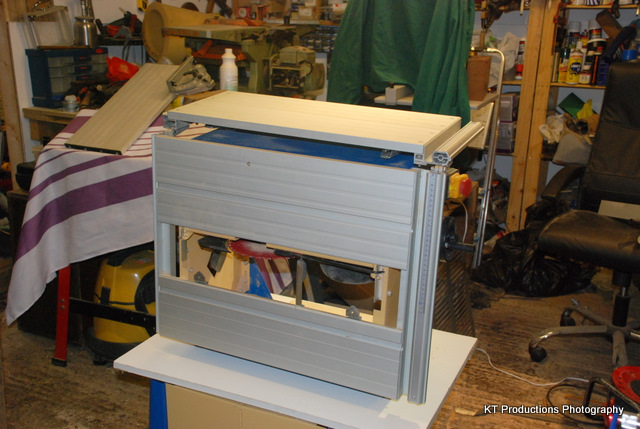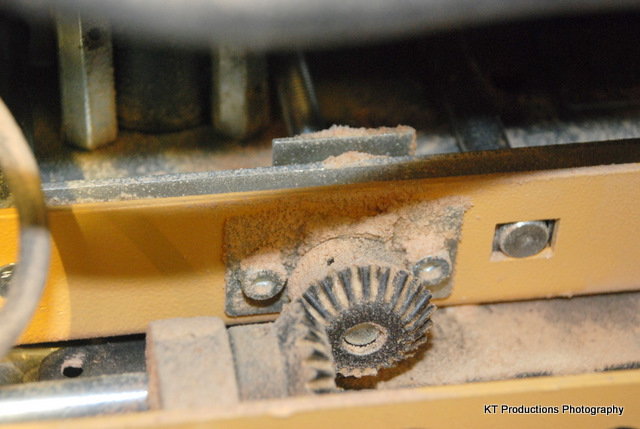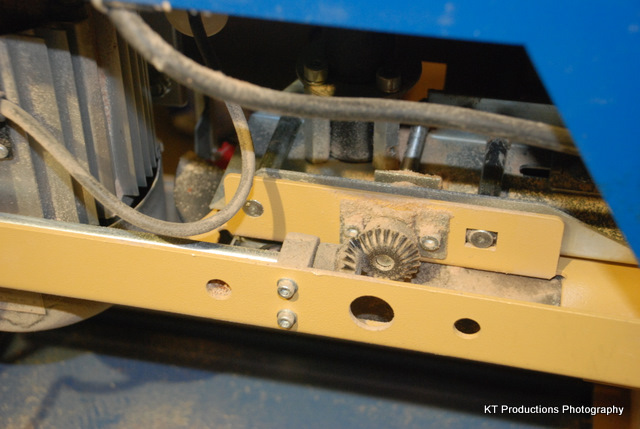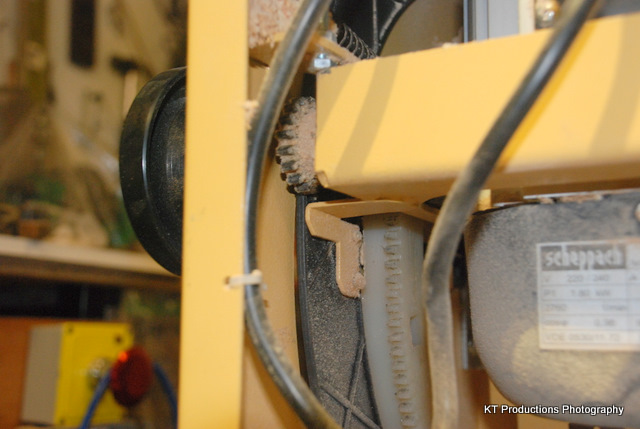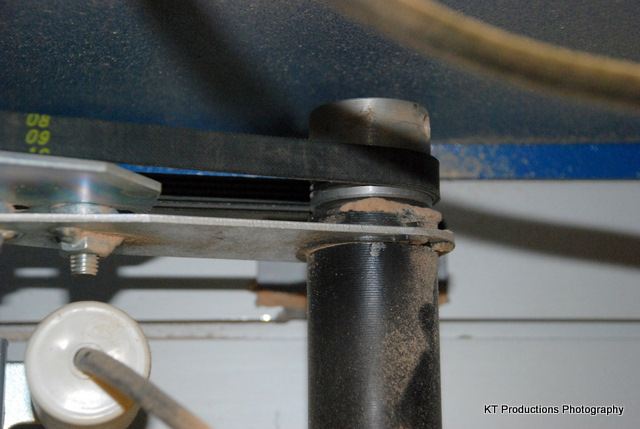I thought a few pictures might help here to see what is the cause and cure of the problem....
Firstly...I gave up lying underneath the saw....even with a facemask the sheer amount of inaccessible dust made it very uncomfortable..it gets EVERYWHERE....so I took the sliding mitre fence off....and unclipped it and tried to lift it.
This is a stupid idea....don't try it...
You can just about lift it up but then it becomes an uncontrollable animal...the stand bloody well folds up and you are in trouble...I got my son to help me lift it...put a piece of board between the saw and the stand and then laid it carefully on its side:
Now we have perfect access to spend over an hour getting all the dust out....this is the state it was in after cutting some oak and some engineered oak flooring...not a lot of work really...
This is the view of the rise and fall gearing. They absolutely caked in solidified dust in each of the mesh grooves and I am surprised they mesh at all!!! This has hardened so much that a brush was not enough...I had to use a dental pick to scrape them all clean one by one!
Behind these cogs is the elevation screw and two guide rods....
Each end of these were completely bocked with dust as you can see on the lower part just behind the cogs. This prevented the rise and fall to go to the extremes of travel...its very action keeps compressing and bunching up debris which I presume will get progressively worse as time goes on....
Next I looked at the tilt mechanism...the "patented" (one wonders why they bothered) DUAL action system....
The accumulation of dust here did the same thing with the rise part of the dual mechanism...both cogs were very congested...again they needed scraping rather than brushing....this clogging causes the rise and fall mechanism to be very stiff as the meshing surfaces become tighter and tighter.
Finally I checked the arbour near the bearings and pulleys and these too had compressed fine dust....I feel that left to accumulate this would present undue load on the whole drive with unknown results (although I could guess...!)
I'd like to point out that I use dust extraction in all points as mandated in the manual...but frankly...the way the dust flies all over the place I think that no end of extraction is going to prevent very fine dust getting in the areas that you really don't want it to.
It was getting late so I left it at this for now...tomorrow I will show some "after" pictures of the cleaned up saw....
Hope this helps.....
Jim

































